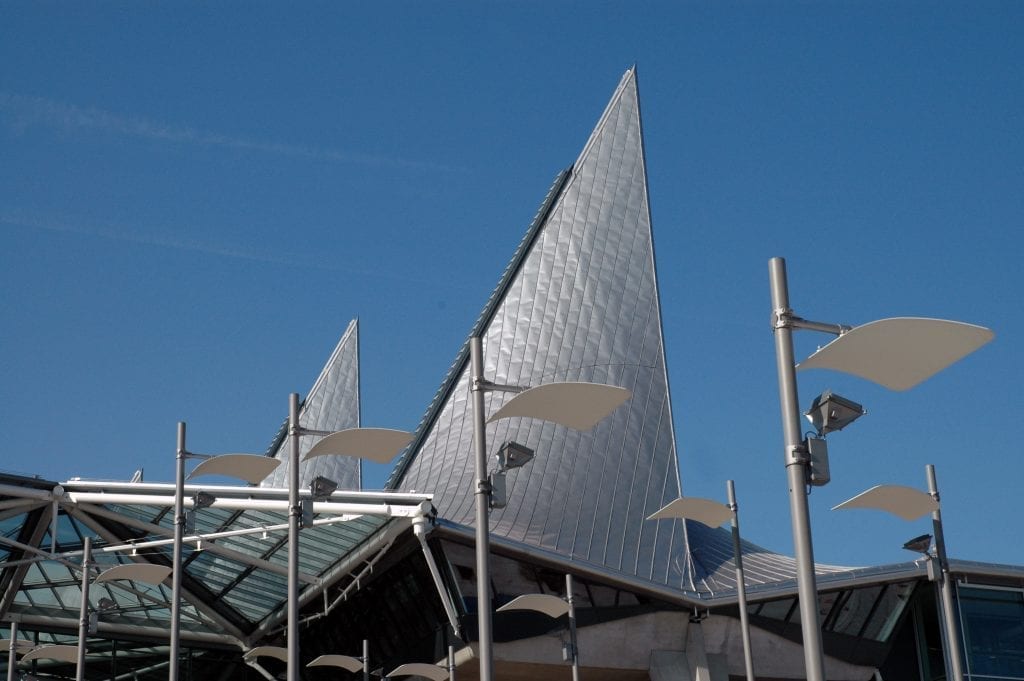
The construction of the new Palace of Justice in Antwerp is the result of an international architectural competition.
The contract was awarded to the Richard Rogers Partnership team in association with Ove Arup and VK Studio offices who proposed an efficient, subtle and transparent building with a powerful symbolic image.
These “sail” roofs are the architectural focal point of the project. An extensive design study was necessary to determine the type of materials and construction methods required for these roofs. For example, wind tunnel studies were needed to determine the loads incurred during extreme weather. Each of the 32 roof modules is formed from four prefabricated quarters, that are then assembled on-site with a system of bolts. The geometric shape traced by these quarters is a hyperbolic paraboloid. This method simplifies the structural assembly and the fabrication of the components. Glued and laminated timber beams disposed on a frame in line with the straight lines of the sails and are mounted onto a tubular steel frame. Then three layers of planks are successively screwed on to form the shell.
The final roof covering is achieved with strips of 316L stainless-steel with Uginox Matt coating. Several technical constraints have pushed the designers towards this type of material: Natural durability, particularly when a site is exposed to maritime influences, the possibility of using welding techniques, complex geometry with either little or no angles in some places and extreme slants in others, lack of access for maintenance and of course; the visual aspect and colour.
To obtain a perfectly water-tight installation, the stainless-steel sheets are welded in a continuous seam using an automatic machine, thus creating an almost monolithic surface.
